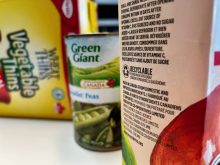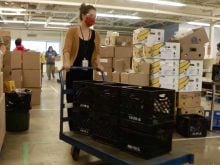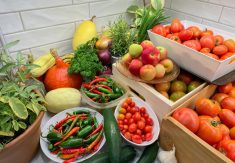While many view farmers’ markets as an enjoyable and quaint, albeit inefficient, place to buy food, few would characterize them as cutting edge.
But small-scale farmers and farmers’ markets are an important source of innovation in the food system because they are a source of direct consumer feedback, Gialuca Brunori, a professor with the department of agrarian, agri-food and agroecology science at the University of Pisa, Italy said.
Brunori said small-scale farmers who direct market to consumers are constantly trying new products and approaches, some of which are later embraced by industrial food makers.
Read Also

The sneak peek of Manitoba Ag Days 2026
Canada’s largest indoor farm show, Manitoba Ag Days, returns to Brandon’s Keystone Centre Jan. 20-22, 2026. Here’s what to expect this year.
“In general, consumers like to go to farmers’ markets in Italy and Europe because they look for local food, fresh food, seasonal food and mostly they like to talk to farmers,” he said in an interview. “They want to have a social connection with farmers and from this interaction, innovation can come.”
Foods such as sourdough artesian breads illustrate that consumer appetite for diverse food products is high, which gives larger businesses the assurances they need before making an investment.
He said the private sector offers huge potential for reshaping the food system to offer more nutritious options but key to success will be ensuring the results are real and not contrived.
“There is a market demand for healthy products, but how does the industry address this? In some cases it is addressing it well, in other cases it is not addressing it well,” he said, noting labelling practices can sometimes create confusion and misunderstanding.
Policy support for local food networks is also important to driving change, again because it fosters interaction and dialogue.
Angela Tagtow, executive director for the center for Nutritional Policy and Promotion with the U.S. Department of Agriculture (USDA) said supporting local food systems is one of four pillars of U.S. government strategy. Since 2001, the USDA has invested $1 billion supporting 40,000 local and regional food businesses.
Since 2009, the number of farmers’ markets in the U.S. has doubled to 8,200, and 42 per cent of schools in the U.S. now source directly from farmers.
Other speakers noted that while trade deals that increase the flow of agricultural goods internationally can improve the seasonal supply of nutritional foods, governments can’t rely on trade policy alone to fix the looming nutritional crisis.
And while speakers representing food industry said the effectiveness of regulatory controls such as sugar taxes or marketing bans are unproven, others said governments must step in when market forces lead consumers towards bad nutritional choices.
















